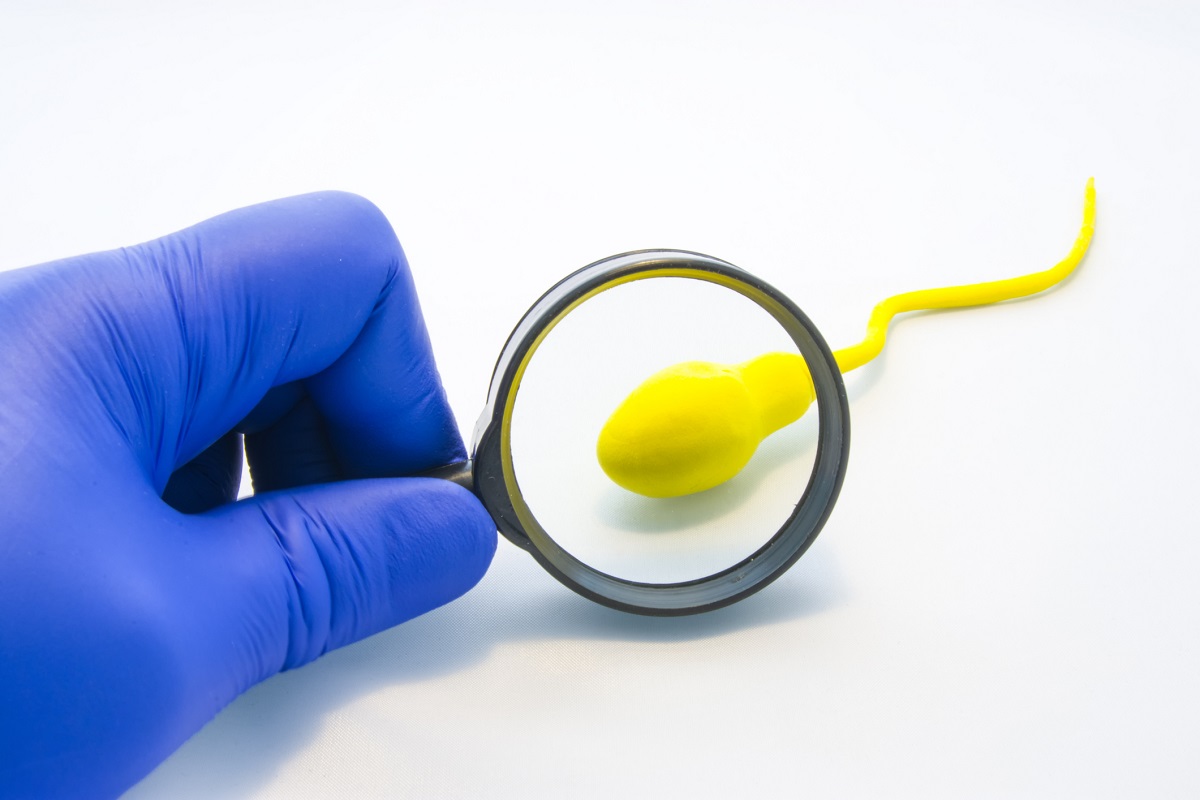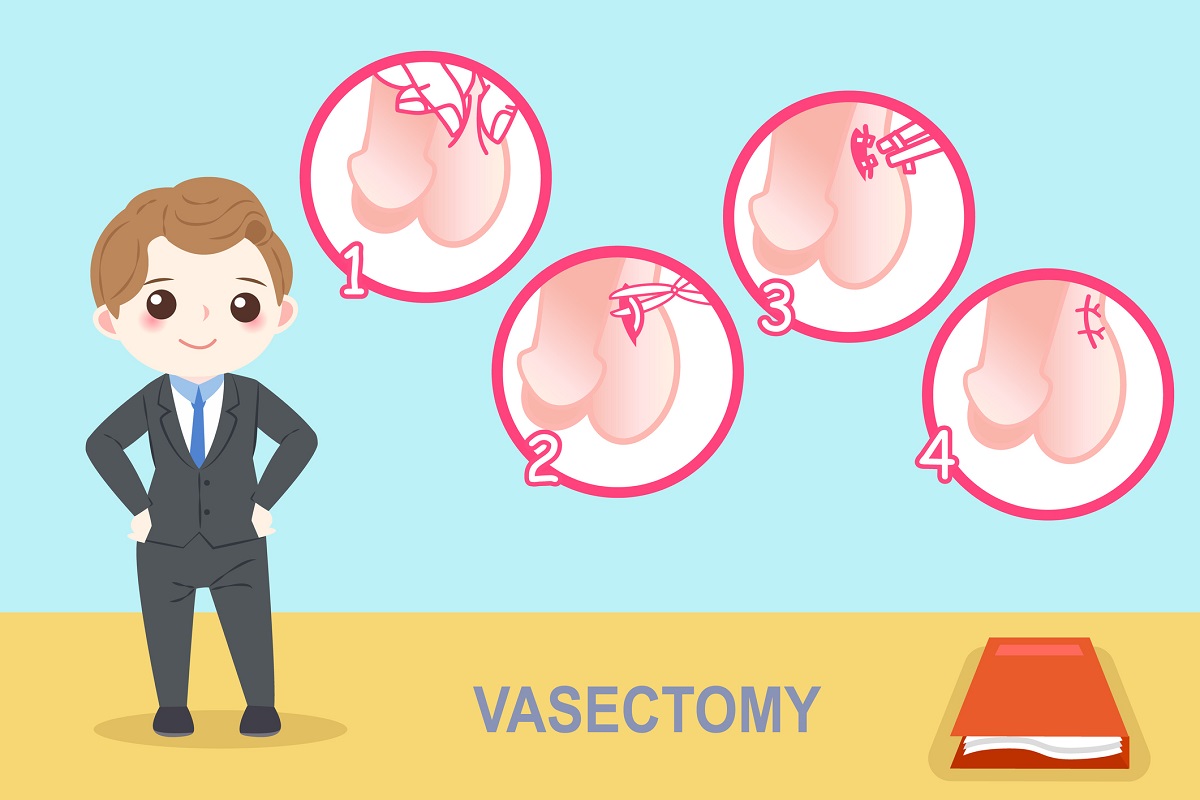- biopedia.sk - Male reproductive system
- urology.sk - Vasectomy: MUDr. Roman Sokol, PhD., MPH
- vazektomiebezskalpelu.cz - Vasectomy "new" option of choice in male contraception: MUDr. Jindřich Šonský, MUDr. Lukáš Bittner, FEBU, FECSM, doc. MUDr. Robert Grill Ph.D., MHA
- mayoclinic.org - Vasectomy
- urologyhealth.org - Vasectomy
- webmd.com - Vasectomy
- nhs.uk - Vasectomy (male sterilisation)
Vasectomy: What is it, when and for whom is it performed?

A vasectomy is the sterilization of a man. It interrupts his fertility.
Article content
Vasectomy is a form of male contraception. It involves surgically severing and ligating both fallopian tubes, resulting in sterilisation, i.e. the inability to produce sperm and the inability to fertilise.
It is an intervention in male fertility that is carried out in private clinics on request or for medical reasons.
A visit to a urologist is required for this intervention.
Male reproductive organs
What do they consist of and what is their function?
The function of the male reproductive system is the production of sex hormones, the production of sperm and the possibility of fertilization.
It is divided into internal and external reproductive organs.
The internal sex organs are...
- Testicles - located in the scrotum below the penis, they form sperm and male sex cells.
- The epididymis produces mucus into which sperm mix and are expelled into the fallopian tubes during ejaculation.
- The fallopian tube passes from the epididymis into the urethra.
- The prostate gland (prostate) is located below the bladder. It produces a milky, thin secretion that mixes with the mucus with sperm to form the ejaculate.
- The seminal vesicle is located on either side of the bladder. It produces a more fluid, sticky substance that affects the movement of sperm.
- Cowper's glands produce a lubricating secretion secreted before ejaculation as a pre-ejaculatory fluid.
External genitalia
- The sexual organ consists of the root, body and glans covered by the foreskin. Erection occurs by blood supply to the penis.
- The scrotum, also known as the scrotum, is the sac in which the testicles are located. The scrotum has a temperature about 4 °C lower than the body temperature. This is where the spermatozoa mature.
Sperm are the male sex cells needed for reproduction. They are needed to fertilise the female sex cell, the egg, to produce an offspring.

They are one of the most important components of male fertility and are part of the ejaculate.
Sperm consists of:
- the head
- the central part
- the flagellum
Their formation begins at puberty and ends at old age.
Read also our article:
What is the hormone testosterone and how does it affect the male body?
What do I need to know before the examination?
When you decide to undergo sterilization, a visit to a urologist is necessary. The doctor will assess your health condition and confirm that the male contraceptive you have chosen can be done without risk.
During the examination, the doctor will find out the man's general medical history, his age, whether he is married, unmarried, whether he suffers from any disease, whether he is taking medication and the main reason for the decision to be sterilized.
The man must be thoroughly educated about the procedure and its possible irreversibility, possible complications, risks and the whole procedure and its benefits.
The man is instructed to have a follow-up spermogram after the procedure to confirm the success of the vasectomy.
Making the right decision is very important. The man should be 100% sure that he no longer wants to conceive a child.
The man's signature is required for the procedure. His wife's signature is also welcome.
Advantages of vasectomy
You are probably wondering what are the advantages of performing a vasectomy on a man. Is it safe?
Advantages:
- It is a safe and effective contraception.
- It is almost 100% prevention of pregnancy
- It is a quick procedure, often performed in outpatient clinics
- It has a low risk of complications
- It is cheaper compared to female sterilization and the use of birth control pills in women
- No contraceptive measures (contraceptive pill, condom) are necessary for the female partner
It is the safest male contraceptive method that prevents the movement of sperm from the testicles during ejaculation.
Will ejaculation be without semen discharge?
Definitely not.
Your ejaculation will also be with semen discharge.
The semen is still present, it is just stripped of its sperm content.
After the vasectomy, sperm will continue to form in the testicles, which the body will absorb on its own.
The effectiveness of vasectomy is more than 99%
Interference with sexual performance by affecting potency, erection or achievement of orgasm has not been demonstrated.
How is a vasectomy performed?
Vasectomy is performed in two ways:
- Conventional vasectomy
- Vasectomy without scalpel
Conventional vasectomy
This procedure is performed using a scalpel.
How is the procedure performed?
The procedure is performed under local anaesthesia on an outpatient basis. The man is fully conscious during the procedure but feels no pain.
Another option is general anaesthesia, where the man does not want to be conscious during the procedure and chooses the anaesthesia option instead. However, this option requires a 24-hour hospital stay after the procedure.
The procedure is simple and quick, taking approximately 15-20 minutes.
During the procedure, the man lies on his back. The genital scrotal area is shaved and cleaned with a disinfectant solution to prevent infection.
The entire procedure is performed under sterile conditions around the genital area.
After disinfection, the surgical incision area is numbed by injecting a local anaesthetic into the scrotal skin.
The doctor palpates the fallopian tube with his fingers. Above it, he makes a small incision in the skin to pull out part of the fallopian tube.
He carefully cuts the fallopian tube so as not to interrupt the blood supply to the testicle.
He ties the fallopian tube on both sides so that he can remove a section of the fallopian tube approximately 2 cm long.
He then sutures the skin with stitches (approximately 2 stitches) of absorbable material.
He does the same procedure on the other side.

Vasectomy without scalpel
The procedure is performed without the aid of a scalpel.
The doctor numbs the scrotum with a local anaesthetic.
He makes a small puncture hole in the scrotal skin to reach the scrotum, i.e. he does not make a surgical incision.
The fallopian tubes are closed in the same way as in a surgically performed conventional vasectomy.
This method of surgery causes little bleeding in the area and no stitches are needed.
It is a less painful procedure with less risk of complications.
Care after the procedure
Hospitalization is not necessary in most cases.
After the procedure, you may experience mild swelling, bruising and mild pain, which will subside within a few days.
Recommendations after the procedure
After the procedure, it is recommended to apply ice to the scrotum to reduce the risk of severe swelling and bruising.
For the first 48 hours after the procedure, the scrotum should be padded and secured with tight-fitting underwear.
Limit physical activity and rest for the first 24 hours.
After 2-3 days, you may begin light activity.
Avoid heavy sports and physical exertion for at least a week.
Avoid sexual activity for a week after the procedure.
Already a week after the vasectomy, a man can start his sex life.
In the first ejaculates after the procedure, an admixture of blood may appear. The ejaculate may have a pink color, which will disappear later.
You may still feel slight pain after ejaculation.
At weeks 4 and 6 after the procedure, the man should have a follow-up spermogram.
During this period, the man must have protected sexual intercourse.
After the procedure, mature sperm may still appear in the last 10 to 15 ejaculations.
Use protection after the procedure until the doctor confirms from the spermogram that no sperm are present in the ejaculate.
The ejaculate is only considered clean when it is free of sperm. This is found in 80% of men 3 months after the procedure.
In some men, non-moving sperm may still be present in the ejaculate for some time after the procedure.
If motile sperm persist in the ejaculate after 6 months, vasectomy should be performed again.
ATTENTION, very important!!!
Vasectomy is a form of contraception but does not protect against STDs!
Read also: What is the risk of changing sexual partners?
It is very rare for a man to have a double fallopian tube, which is why a control spermiogram is also performed. Because after one fallopian tube is removed, the other is still functional and the ejaculate contains sperm.
What is the risk of the procedure?
A big risk is changing your mind after a vasectomy and wanting to conceive a child.

Although vasectomy reversal is possible, there is no guarantee that it will be successful.
The risk of complications associated with the procedure is small and almost non-existent. It is a much lower risk than for women undergoing a sterilisation procedure.
For men, performing sterilization is a simple and painless procedure.
Possible complications immediately after the procedure
- Bleeding in the scrotum
- Formation of a blood clot in the scrotum
- Finding blood in the ejaculate
- Bruising around the scrotum
- Infection
- Slight pain after the procedure and a feeling of discomfort
- Swelling
Later complications after the procedure
- Chronic pain, which occurs in only 1 to 2% of men
- Fluid build-up in the testicle, which can cause dull pain
- Inflammation caused by sperm leakage
- Failure of vasectomy and pregnancy
- Formation of a cyst in the tube, located at the top of the testicle, due to a buildup of sperm (spermatocele)
- Formation of hydrocele - swelling of the scrotum
Very rarely, after a successful sterilization procedure, the fallopian tube may spontaneously recover years later, i.e. the patency of the fallopian tube and the ability to expel sperm in the ejaculate with subsequent fertilization. However, such a risk occurs in less than 0.1%.
When is a vasectomy not performed?
Based on the examination, the urologist may recommend not to perform the procedure.
It is not recommended to perform a vasectomy if you have chronic pain or testicular disease.
Read also our article.
Fears and worries about problems that are unfounded
Vasectomy definitely has no effect:
Sexual performance - Vasectomy does not affect your virility or sexual desire. There is even reported higher sexual satisfaction after the procedure.
Genital damage - There is very little concern about genital damage or testicular injury.
Increased risk of cancer - There is no link between these two factors.
Increased risk of heart disease - As with cancer risk, there is no link to heart disease.
Causing severe pain - You may experience mild pain and more of a tugging sensation during surgery, but severe pain is rare. If you experience severe pain during the procedure, your doctor will give you an increased dose of anesthetic to provide local anesthesia. After surgery, mild pain is normal and will subside after a few days.
Read also our interesting articles for men:
- How to detect prostate cancer as early as possible and what are the treatment options?
- What is andropause (+symptoms)
- How does a poor lifestyle increase the risk of impotence, erectile dysfunction?
- Erectile dysfunction: what are its causes? Can they be both psychological and physical?
- Enlarged prostate: cause and symptoms. What are the risks?
Is it possible to restore fertility?
Nowadays, there is a possibility of surgical restoration of the patency of the fallopian tubes, using microsurgery.
The operation can take several hours. Both ends of the fallopian tubes are sewn together during the operation. However, the success rate of restoring fertility is low and questionable.
As a rule of thumb, the longer the time elapses after the vasectomy, the less chance of success.
In case a man changes his mind and subsequently desires to have a child by fertilization with his own sperm, it is recommended to deposit one's own sperm in a sperm bank before sterilization.
Another option for obtaining sperm after vasectomy is also direct collection of fluid from the ducts of the epididymis or from testicular tissue with sex cells.
Interesting resources










